Marine Starting Battery vs Deep Cycle|10 Classy Topics
Powering marine vehicles requires the use of specially designed batteries,commonly known as starting batteries. This is due to the dual purposes of starting up the vehicles and providing the necessary energy to drive the vehicle throughout the entire length and breadth of the journey.
The debate marine starting Battery vs deep cycle come into discussion because there are two main types of batteries for your consideration.
These are the deep cycle and the cranking batteries respectively. We are going to examine what these two batteries are as well as the differences between the two of them.
Cranking Battery
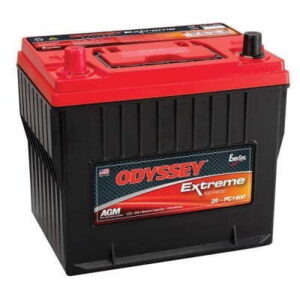



A cranking battery is a kind of battery which enables the marine vessels to start. They send power to the engines at the activation of the ignition switch.It is commonly used for starting theengines.
It also called a starter battery. When triggered, the battery emits a short and strong burst of energy which travels to the motor. It thereafter switches off as soon as it fulfills its purpose.
It stays ‘dead’ throughout the rest of the time that the sea vehicle is operational. Some of the top marine battery brands are Optima, Odyssey, VMAXTANKS, and Exide.
Deep Cycle Marine Battery
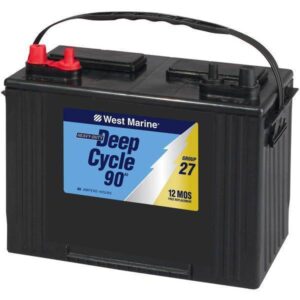

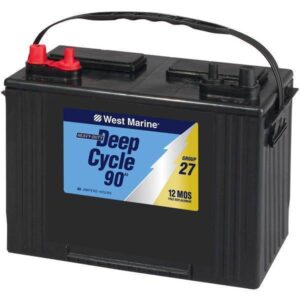

As stated, the cranking battery becomes inactive after the ocean vehicle is already powered. The deep cycle battery takes over from it and powers the marine vehicle throughout the remaining portion of the journey.
This kind of battery provides continuous cranking amps power output over a prolonged duration of time. It emits higher voltage ratings which are responsible for steering the ship throughout its course.
They are hence heavier and also take up plenty of storage space. Some of the top deep-cycle battery brands are Universal, VMAX, and Mighty Max.
Also Read: Best Rated 12v Air Compressor
Marine Starting Battery vs Deep Cycle – Similarities & Differences
The following are the major differences between these two kinds of batteries:
Applications
As has already been explained, these two kinds of batteries find applicability in different circumstances on the whole. The cranking batteries play the role of starting the marine vessels. As soon as the motor ignited, they become inactive until they are required to play the same role again. The deep cycle marine batteries on the other hand power the vessels after they started through to the end of the journey. They cease to operate as soon as the marine comes to a halt.
Power Output
Owing to the uniqueness of their roles, they emit varying amounts of power output. The cranking battery delivers around 75-400 amperes of electrical energy for some 5-15 seconds. They are thereafter recharged by the engine’s alternator after which they become inactive. The deep-cycle marine battery, on the other hand, generates a whopping 500 amperes for approximately 80 hours at a time. It also has a 140-minute reserve capacity which lets it deliver 25 amp hours of current without necessarily dropping below the 10.5 volts.
Construction
The cranking battery constructed by using alternating layers of negative and positive plates. They are also the lead-acid batteries and possess some insulation in between the plates. As such, they are less likely to overheat and predispose you to the danger of fire outbreak. As for the deep-cycle marine battery, they possess thicker plates which are complemented with a high content of antimony. For this reason, they are very durable and capable of generating higher power output for a prolonged duration of time.
Nature of Plates
Both of these batteries possess some plates as part and parcel of their structural makeup systems. However, the nature of these plates differs significantly from one another. The cranking batteries have thinner and numerous plates.
These jointly provide larger surface areas which generate higher amperage and bursts of electrical currents. The deep-cycle battery, on the other hand, possesses thicker and more active plates. These ones possess higher-density active paste material as well as thicker separators. In light of this, their current output is significantly higher.
Duration of Service
You are generally more likely to obtain longer value out of the deep-cycle batteries than the cranking batteries. This stems from the sheer durable and awesome construction that the former embodies. Indeed, the deep-cycle batteries exude higher levels of power output for a prolonged amount of time.
Moreover, they are also easily rechargeable, a fact that makes them reusable consistently and repeatedly. The same may not be said of the cranking battery. It delivers shorter bursts of energy output at any given time.
Long-term Reliability
All factors considered the deep-cycle batteries last longer than their cranking battery counterparts. This difference is mainly brought about by the differences in the structural makeup.
Given their possession of more antimony, these boat batteries resist corrosion well and in the process, operate much longer. The cranking power battery, on the other hand, is generally more fragile and are also unable to tolerate deep discharges. In addition to this, they are unable to resist high impacts and as a result of this, last a shorter duration of time.Before buying.also check which brand offers free replacement within warranty period.
Energy Storage
Generally speaking, a deep-cycle battery store 3 to 4 times the expected amount of energy that is usable in between the recharge cycles. This high energy storage capacity is what makes it suitable for powering such vessels for an extended duration of time. In case of the cranking battery. Its charge capacity is lower given that it only plays the role of starting the vessels. It is thus in your best interest to use the right battery for the right job.
Discharge Rate and Capacity
Just like their charge capacities differ, their discharge capacity also varies significantly. A typical cranking battery will deliver only 30 seconds of energy on the higher side. It thereafter loses charge and becomes inactive. The rate of discharge of the deep-cycle battery, however, depends mainly on the load of the boat concerned. On the whole, though, a typical 8-hour use of the battery shall normally result in a 50-70% loss of the stored charge.
Apart from this, there is also another type which accomodate both the functionalities,that is dual purpose battery.They are also quite familiar for less maintenance requirement.
FAQ’s
Can I use deep cycle battery for starting?
– Yes you can, use the lower CCA of your deep cycle battery.
Should I use a deep cycle battery in my boat?
– Not recommended,rather use a cranking amp battery.
What is the best marine starting battery?
– Search our details review here.
When should you use a deep cycle battery?
– All Electric Vehicle, car, Golf Cart,RV application,Floor Scrubber.
Closing Remarks
Even though these two kinds of batteries differ in their structural makeup and functionality, they are nonetheless complementary. This is to mean that you can never power your marine vessel effectively without incorporating both of them. The logic here is that the roles they play distinct but nevertheless equally vital. It is therefore in your best interest to source and makes use of them appropriately! Do not just enjoy the benefits of these batteries alone. Share this information as far and wide as possible!



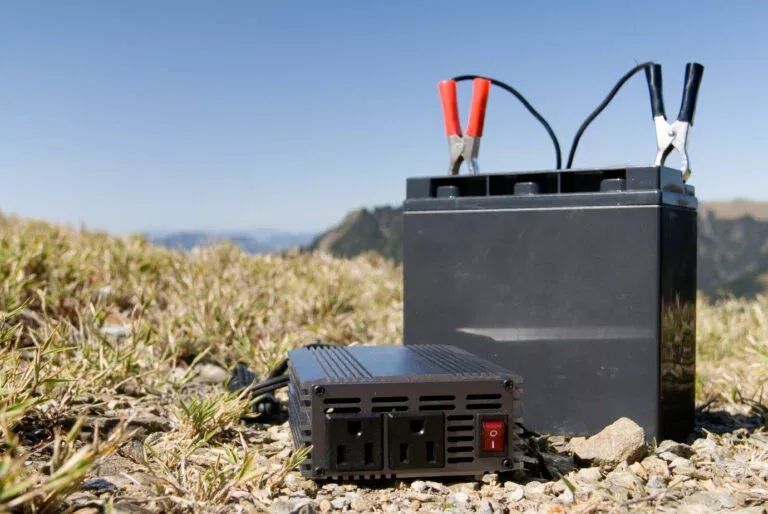



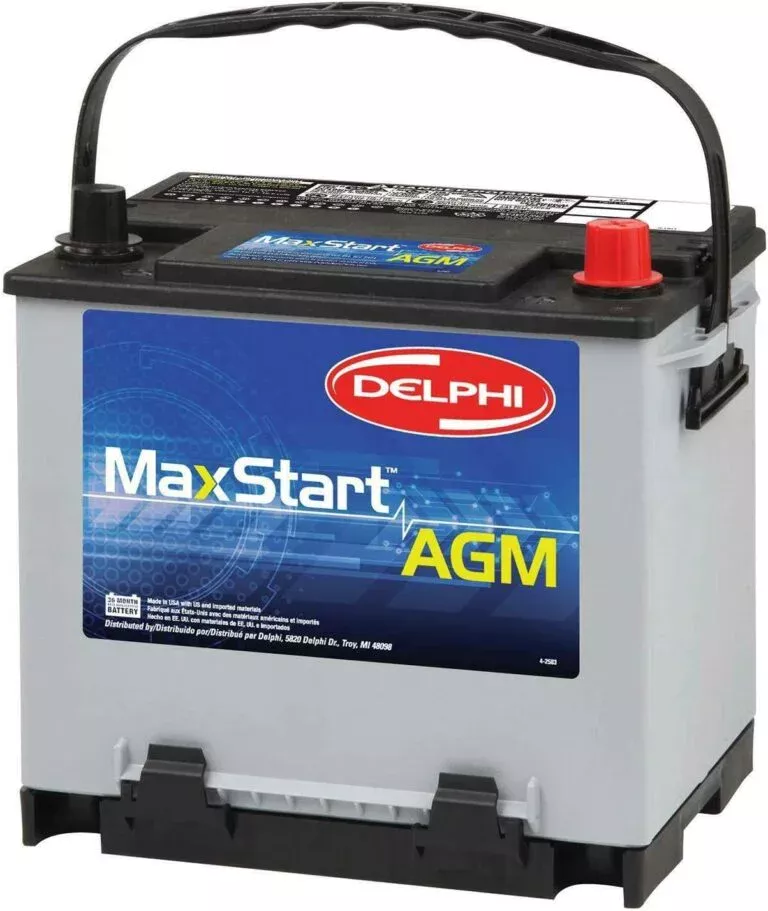
So, owning a bass boat with several electronics and other items being ran off the starting battery should I use a deep cycle for my starting battery also?